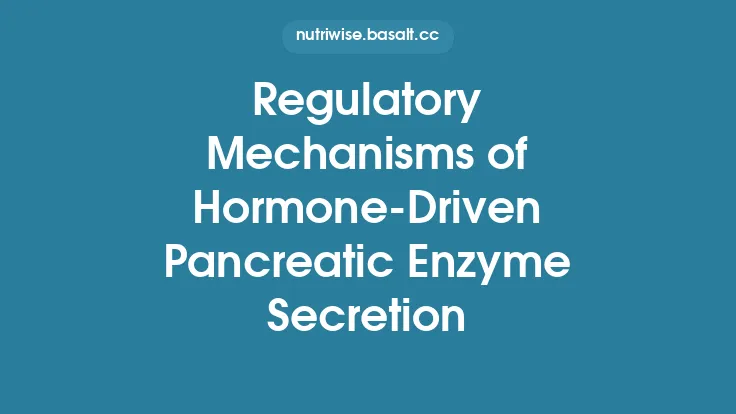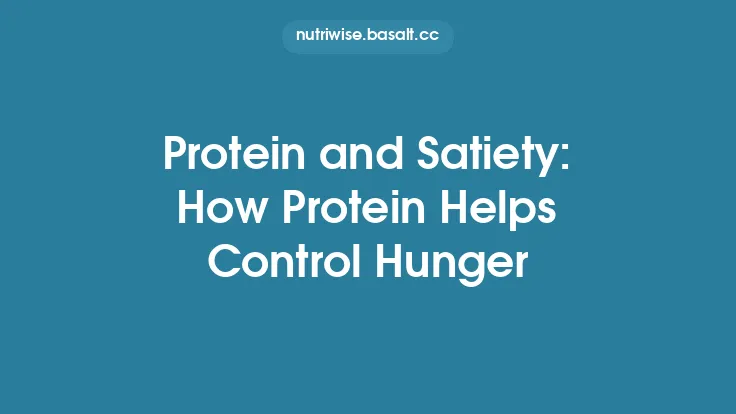Gastrin is a peptide hormone that sits at the core of the stomach’s ability to produce the strong hydrochloric acid needed for digestion. Discovered in the early 20th century, gastrin has since been recognized as a master regulator that coordinates several cellular players—chiefly the entero‑endocrine G‑cells, enterochromaffin‑like (ECL) cells, and the acid‑secreting parietal cells. Understanding how gastrin is synthesized, released, and how it signals to its target cells provides a comprehensive picture of one of the most essential digestive mechanisms.
Gastrin: Structure and Synthesis
Gastrin belongs to the family of peptide hormones derived from a larger precursor, preprogastrin. The gene GAST encodes a 101‑amino‑acid preprohormone that undergoes several post‑translational modifications:
- Signal peptide removal – The N‑terminal signal sequence (≈ 21 residues) is cleaved as the nascent peptide enters the endoplasmic reticulum.
- Pro‑gastrin formation – The remaining 80‑residue pro‑gastrin is packaged into secretory granules.
- Proteolytic processing – Specific endopeptidases generate multiple bioactive isoforms, the most abundant being Gastrin‑17 (a 17‑amino‑acid peptide) and Gastrin‑34 (also called big gastrin). A smaller fragment, Gastrin‑14 (also known as mini‑gastrin), is produced in the antrum and has a more limited role.
All isoforms share a conserved C‑terminal tetrapeptide Trp‑Met‑Asp‑Phe‑NH₂, which is essential for receptor binding and biological activity.
Cellular Sources and Distribution
The primary source of gastrin is the G‑cell, an entero‑endocrine cell located in the gastric antrum and, to a lesser extent, the duodenum. G‑cells are strategically positioned near the lumen, allowing them to sense the chemical composition of ingested food. In addition to the antrum, a modest population of G‑cells resides in the gastric fundus and the upper small intestine, contributing to the systemic pool of gastrin.
Regulation of Gastric Release
Gastrin secretion is tightly controlled by a combination of neural, chemical, and hormonal cues. The principal stimulators and inhibitors are:
| Stimulus | Mechanism |
|---|---|
| Luminal peptides and amino acids (especially phenylalanine, arginine) | Direct activation of G‑cell chemosensors → increased intracellular Ca²⁺ and cAMP |
| Gastric distension | Stretch‑activated mechanoreceptors trigger vagal afferents that enhance gastrin release |
| Vagal acetylcholine (ACh) | Muscarinic (M₃) receptors on G‑cells stimulate gastrin secretion |
| Gastrin‑releasing peptide (GRP) (from enteric neurons) | Binds GRP receptors on G‑cells, amplifying release |
| Low intragastric pH (≤ 3) | Inhibits G‑cell activity via a pH‑sensing mechanism, providing negative feedback |
| Somatostatin (produced by D‑cells) | Binds somatostatin receptors (SSTR₂) on G‑cells, suppressing cAMP and Ca²⁺ signaling |
The pH‑dependent feedback loop is especially critical: as acid secretion rises, the resulting low pH directly dampens further gastrin release, preventing excessive acidity.
Gastrin Receptors and Signal Transduction
Gastrin exerts its effects through the cholecystokinin‑B (CCK‑B) receptor, a G‑protein‑coupled receptor (GPCR) expressed on several gastric cell types:
- ECL cells (histamine‑producing)
- Parietal cells (acid‑secreting)
Binding of gastrin to CCK‑B receptors activates the Gq/11 protein pathway, leading to:
- Phospholipase C‑β (PLCβ) activation → hydrolysis of PIP₂ into IP₃ and DAG.
- IP₃‑mediated Ca²⁺ release from the endoplasmic reticulum, raising intracellular calcium.
- DAG‑dependent protein kinase C (PKC) activation, which further modulates downstream effectors.
The rise in intracellular Ca²⁺ and PKC activity culminates in the secretion of histamine from ECL cells and the direct stimulation of parietal cells.
Role in Parietal Cell Activation and Acid Secretion
Acid secretion is a multistep, synergistic process that requires the coordinated action of three principal mediators:
- Gastrin – Binds CCK‑B receptors on ECL cells → histamine release.
- Histamine – Binds H₂ receptors on parietal cells → cAMP production via Gs protein, activating protein kinase A (PKA).
- Acetylcholine – Binds M₃ receptors on parietal cells → Ca²⁺ influx via Gq pathway.
The H⁺/K⁺‑ATPase (proton pump) located on the apical membrane of parietal cells is the final effector. PKA‑mediated phosphorylation and Ca²⁺‑dependent signaling promote the translocation of pump‑containing vesicles to the membrane, where the pump exchanges intracellular K⁺ for extracellular H⁺, generating gastric acid.
Gastrin’s contribution is twofold:
- Direct stimulation of parietal cells (a modest effect compared with histamine).
- Indirect amplification via histamine release, which is the dominant driver of maximal acid output.
Interaction with Histamine and Acetylcholine
The triad of gastrin, histamine, and acetylcholine creates a robust, feed‑forward system:
- Gastrin → ECL cell → Histamine → Parietal cell (cAMP pathway).
- Vagal ACh → Parietal cell (Ca²⁺ pathway) and G‑cell (enhanced gastrin release).
Pharmacologically, this interplay explains why H₂‑receptor antagonists (e.g., ranitidine) and proton‑pump inhibitors (e.g., omeprazole) effectively suppress acid secretion: they interrupt the downstream signaling cascades that gastrin initiates.
Clinical Relevance
Hypergastrinemia
Elevated gastrin levels can arise from:
- Chronic hypochlorhydria (e.g., autoimmune gastritis, prolonged PPI therapy) → loss of pH‑mediated inhibition.
- Gastrin‑producing tumors (gastrinomas), most commonly associated with Zollinger‑Ellison syndrome.
- Renal failure, where reduced clearance contributes to higher circulating gastrin.
Consequences include excessive acid secretion, peptic ulcer disease, and, in severe cases, gastro‑esophageal reflux complications.
Hypogastrinemia
Reduced gastrin may result from:
- G‑cell loss due to surgical resection of the antrum.
- Severe mucosal damage (e.g., chronic gastritis) that destroys G‑cells.
Patients may experience hypochlorhydria, leading to impaired protein digestion, bacterial overgrowth, and malabsorption of micronutrients such as iron and vitamin B₁₂.
Diagnostic Use
- Serum gastrin measurement is a key diagnostic tool for suspected gastrinomas and for evaluating unexplained hyperacidity.
- Secretin stimulation test (though involving secretin, the test is used to differentiate gastrinomas from other causes) – a brief mention is permissible as a diagnostic context.
Therapeutic Implications
- Proton‑pump inhibitors (PPIs) reduce gastric acidity, which secondarily raises gastrin levels via loss of negative feedback. Long‑term PPI use can thus lead to mild hypergastrinemia.
- Somatostatin analogs (e.g., octreotide) are employed to suppress gastrin release in gastrinomas.
- Gastrin receptor antagonists are under investigation as potential agents to modulate acid output without directly inhibiting the proton pump.
Gastrin in the Physiological Context of a Meal
During a typical meal, the sequence of events unfolds as follows:
- Ingestion of protein‑rich food → luminal amino acids stimulate G‑cells.
- Gastric distension → vagal afferents augment gastrin release.
- Gastrin surge → histamine release and modest direct parietal cell activation.
- Acid secretion ramps up, lowering gastric pH to 1–2, which facilitates protein denaturation and pepsin activation.
- Acidic environment → feedback inhibition of gastrin, while somatostatin release from D‑cells rises, further curbing gastrin output.
This tightly timed cascade ensures that acid is available precisely when needed, avoiding unnecessary exposure of the mucosa to corrosive conditions.
Emerging Research Directions
- Gastrin‑mediated mucosal growth: Gastrin has trophic effects on the gastric epithelium, promoting cell proliferation via the EGFR‑MAPK pathway. Understanding this relationship may illuminate mechanisms of gastric hyperplasia and cancer.
- Gastrin and the microbiome: Recent studies suggest that altered gastrin levels influence gastric pH, thereby shaping the composition of the upper gastrointestinal microbiota.
- Selective CCK‑B receptor modulators: Efforts are underway to develop agents that block gastrin’s pathological actions (e.g., in gastrinomas) while preserving its physiological role in acid regulation.
Summary
Gastrin is a pivotal peptide hormone that orchestrates the stomach’s acid‑producing machinery. Synthesized by G‑cells, it is released in response to luminal nutrients, gastric distension, and vagal stimulation, while being restrained by low pH and somatostatin. Through the CCK‑B receptor, gastrin activates ECL cells to release histamine and directly stimulates parietal cells, culminating in the activation of the H⁺/K⁺‑ATPase proton pump. The hormone’s precise regulation safeguards against both hypo‑ and hyper‑acidity, and dysregulation manifests in clinically significant conditions such as gastrinomas and chronic hypochlorhydria. Ongoing research continues to unravel gastrin’s broader roles in mucosal growth and gut microbiota, promising new therapeutic avenues that could fine‑tune gastric acid secretion without the drawbacks of current acid‑suppressive drugs.





